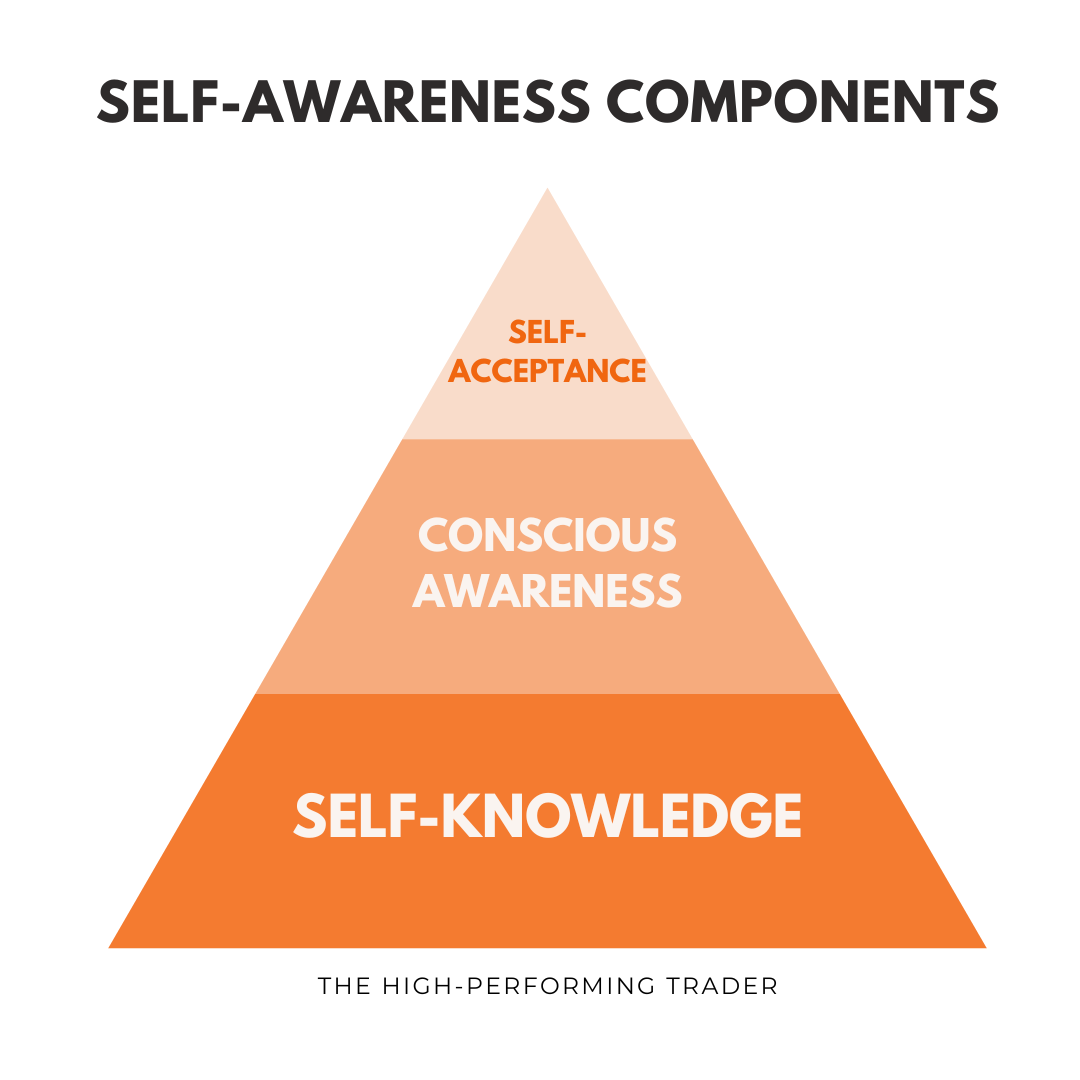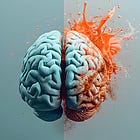Thursday Trader's Tip: Why "Knowing Your Triggers" Won’t Make You Self-Aware
Thursday Trader's Tip editions offer quick trading psychology advice that can be digested in 5 minutes.
Watch this edition video at the end of the post.
There’s this idea that self-awareness is all about knowing what triggers you and how your body reacts in those moments. While that’s crucial (I’ve shared a tool here to help you with this knowledge), it’s not the whole picture.
Here’s what gets overlooked by most traders:
Self-awareness cannot exist alongside self-judgment.
Even if you are highly conscious and aware during your sessions, you’ll not be able to get to the highest patamar of awareness if you struggle with self-acceptance.
So, what does true self-awareness mean?
It’s made up of three interconnected elements:
Knowledge about yourself – “I know missing a trade is my biggest trigger.”
Conscious awareness – “I recognize when I’m triggered by a missed trade and can notice the thoughts and emotions that show up at that moment.”
Self-acceptance – “I see the thoughts and emotions that arise when I miss a trade and accept them as a normal part of being human. They’re just one part of me doing its job; they don’t define me.”
Positioning these three in a pyramid, we’d have something like this:
Without knowing your problem-pattern ecosystem, there’s little room for conscious awareness.
Self-acceptance is a requirement for self-awareness but it can only emerge on top of these two layers.
The Missing Link
I see traders over-focusing on knowing more about themselves and their problem patterns in trading, but rarely do they work on the self-acceptance of that knowledge.
Let’s take Joseph, for example.
Joseph is highly aware of his triggers. After two losses in a row, he can feel his body tensing and his mind racing with anger. In high school, Joseph used to snap at classmates when they disagreed with him. On the charts, he recognizes these signs and wisely steps back from trading when he feels that familiar surge of emotion.
But here’s where Joseph struggles: while his interruption works in the moment, he doesn’t know how to reframe his perspective. Instead of managing and processing the anger, he suppresses it, carrying it into the next trading day. That’s when Joseph’s emotions spill over, and he enters an impulsive trade right at market open.
True self-acceptance is not about identifying yourself with your emotions (known as cognitive fusion). It’s about acknowledging every part of yourself and your emotions as valid.
Valid doesn’t mean your emotions are the best response to the situation; it means they’re part of you, doing their job to protect you somehow.
So, I have two challenges for you to start to implement moving forward:
Allow your emotions to flow: When anger arises on the charts, let yourself feel it without guilt. Allowing the emotion to flow will help you let it go instead of getting stuck in your body.
Express how you feel: If someone says something that bothers you, don’t bottle it up. Even if you don’t address it right away, make it a point to share how you feel—whether it’s a text later that day or a conversation when you see them next.
Without acceptance, there’s no change.
Acceptance goes way beyond acknowledging. I hope you got that from this post.
Only by practicing true self-acceptance can you change your undesired behaviors in the market.
If this resonates, I’d love it if you shared this post to help spread awareness.
Peaceful trading,
Sara
P.S. If you took value, I’d appreciate it if you tap the ❤️ button.
Ready to commit to becoming your best trader self? Try the paid plan:
Related reads:
Don't miss out on this week's edition in video format:








great write up
Wow!
I need to do this with my whole life in general!